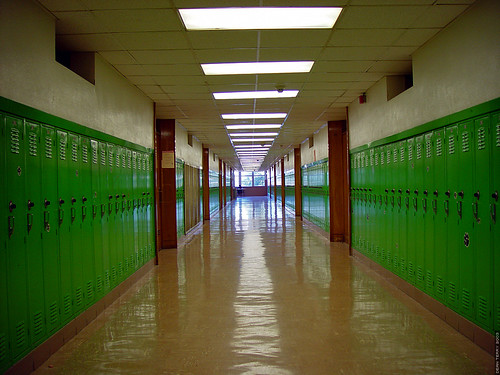Question from a new teacher
By Mary Bigelow
Posted on 2010-05-11
 I’ve just been hired for my first teaching position as a high school biology teacher. I’m excited, but a little apprehensive. What can I do now to get ready, before I get access to the school?
I’ve just been hired for my first teaching position as a high school biology teacher. I’m excited, but a little apprehensive. What can I do now to get ready, before I get access to the school?
—Grace, Little Rock, Arkansas
Congratulations, and welcome to the teaching profession! You’ll get your class lists and the key to your classroom/lab. But there are many things you can do now before your official start (this is also true for readers who are looking for a position). There are many books and websites with tips for new teachers, but science teachers have additional challenges in terms of managing a laboratory, maintaining inventories, following safety requirements, and staying current with the content.
Ask for a copy of the district science curriculum and copies of the textbook and teacher guide. Familiarize yourself with the content topics, big ideas, essential questions, learning objectives, activities, and assessments. Highlight the equipment and materials you’ll need for the first unit, so you can make sure you have what you need to get started when you have access to the building. Explore NSTA’s SciLinks to start your own lists of websites related to the curriculum to share with your students. If you notice any gaps in your content knowledge, check out NSTA’s Learning Center for Science Objects, archived webinars, and podcasts on a variety of topics.
Download a copy of your state’s academic standards for science to learn what the expectations are for your subject or grade level. Your state probably has a site that summarizes the standardized test scores for your school, too. Look for the school’s “report card” that describes its Adequate Yearly Progress and demographic data.
Find out what basic safety equipment is in the lab. This affects what kind of activities you can plan. Ask ahead of time if notebooks and other consumable materials have been ordered. Once the school year starts, it’s often hard to get things that are not in inventory. Ask what technology will available to you in the classroom, such as an interactive white board, “clickers,” probeware, cameras, or projection attachments for microscopes. If the school does not provide a laptop you can take home, invest in some USB flash drives you can use to take files to work on at home.
Use the district website to learn about your school and the other schools in the district. Look at the current calendar to get a sense of when events such as open houses and holiday breaks occur. Check out the student and faculty handbooks if they are online to learn about the procedures you’ll have to follow. Look at how other teachers have structured their district webpages. Start to plan what you’ll put on yours, including an introduction to your professional background and your interests related to science.
Visit the community if you’re not already familiar with it, both in person and online. Learn about the local history and explore any museums, parks, or nature centers in the region. Check out the science programs and resources at any nearby colleges and universities. Note the location of the public library and whether your students have access to it.
Begin to assemble your professional resources. Some science teachers like to wear a lab coat or apron, and you may want to have your own goggles rather than use the student ones. If you’re not already a member, take advantage of NSTA’s discounted membership rate for new teachers. You’ll get a subscription to The Science Teacher and access to NSTA’s other journals and archives, NSTA Reports with news updates and resources, and access the NSTA Communities and email lists. Even if you lurk for a while, you’ll learn from the amazing teachers who post there. Browse back issues of The Science Teacher for ideas and suggestions. Create your professional library with titles from NSTA publications and add these to your summer reading list. There are so many to choose form—I’d recommend starting with Investigating Safely: A Guide for High School Teachers, NSTA Guide to Planning Science Facilities (which has suggestions for organizing materials as well as safety guidelines), The Biology Teacher’s Handbook, and Science Formative Assessment.
This would also be a good time to purge any social media sites of inappropriate information or photos. Whether we like it or not, teachers are considered role models and held to a higher standard of decorum and behavior.
I’ve heard the most important goal of a first-year teacher is to become a second-year teacher. You’ll have lots of challenges, but you have a community of science teachers who are willing to help. You’re wise to start preparing now.
Any other suggestions for Grace? Add a comment.
Photograph: http://farm1.static.flickr.com/12/18636595_f09160199c.jpg
Disclaimer: The views expressed in this blog post are those of the author(s) and do not necessarily reflect the official position of the National Science Teaching Association (NSTA).


